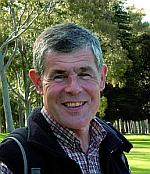 | |||
|
| Home > Public Information > ING Annual Reports > 2004-2005 > Foreword |
Previous: General Information | Up: Table of Contents | Next: Introduction
Other available formats: PDF
Foreword
 |
It is a pleasure to write this foreword to the 2004-2005 Biennial Report of the Isaac Newton Group of Telescopes, on behalf of the ING Board.
The period 2004-2005 marks a new phase for the ING. The restructuring of the organization, prompted by a reduction in the level of funding, was completed in this period and at the end of this period the ING underwent a major review with a very positive outcome. These two aspects mark this period very well: despite the restructuring the ING has been able to maintain and develop a world class observatory with facilities that are high in demand and produce excellent science. The Board is very impressed with these accomplishments and wants to compliment the entire ING staff for carrying the observatory through harsh times in such an effective way.
The participation of the IAC in the ING was very important for maintaining the funding of the ING at an appropriate level. In my opinion it has accomplished even more. It resulted in a more intensive collaboration between the different ING partners, which will prove to be invaluable for the future of the observatory at the Roque de Los Muchachos.
The past two years have been very productive from a scientific point of view. LIRIS, the near infrared imager/spectrograph designed and built by the IAC for the WHT, was commissioned successfully and has done exciting first science. As part of the NASA Deep Impact campaign it observed the collision between an impactor probe and the nucleus of comet 9P/Tempel1. Another new WHT instrument, OASIS, opened the area of high spatial-resolution imaging-spectroscopy. In combination with NAOMI, the adaptive optics system, it provides a unique capability for a wide range of interesting problems, ranging from the dynamics in the very centers of galaxies to spectroscopy of individual stars in star clusters or crowded regions. The laser guide star system that is now put together will open up the entire northern sky for AO assisted spectroscopy and imaging and bring to fruition a technical and science area that will prove to be very interesting and strategically important for both the ING and its communities.
But there was more: the demand for visiting instruments, all producing high quality science, remains higher than can be accommodated. The review panel recognized that the WHT is one of the few 4-m class telescopes that accommodates visiting instruments and considered this a very strong aspect in many respects: it produces excellent science and it maintains high quality instrument development within the community. The suite is quite impressive: PN.S, CIRPASS, INTEGRAL, SAURON, PLANETPOL and others to come.
The INT, now operational in a single instrument mode, as was the JKT before its retirement, continues to entertain excellent projects. Highlights are charting the environs of the Local Group galaxies Messier 31 and Messier 33 to unprecedented deep levels, the jet driven ring around Cygnus X-1 and the rings around planetary nebulae reflecting the mass loss history of the dying stellar precursor.
The Board started focusing its attention on the future of the ING past 2009 when the present contracts between the funding agencies NWO, PPARC and the IAC terminate. The high potential of the ING, in particular the WHT, is widely recognized. The ING community and the review panel have already made this clear, and we expect the funding agencies to come with positive formal statements soon. The pressure on funding in the presently participating countries is high and resources need to be shared with a several new initiatives in the realm of future large facilities. Yet the Board hopes, with the community that the funding agencies have the insight that maintaining a world class facility, even though consisting of modest size telescopes by modern standards, is crucial for the health of its scientific community.
| Top | Back |
|

